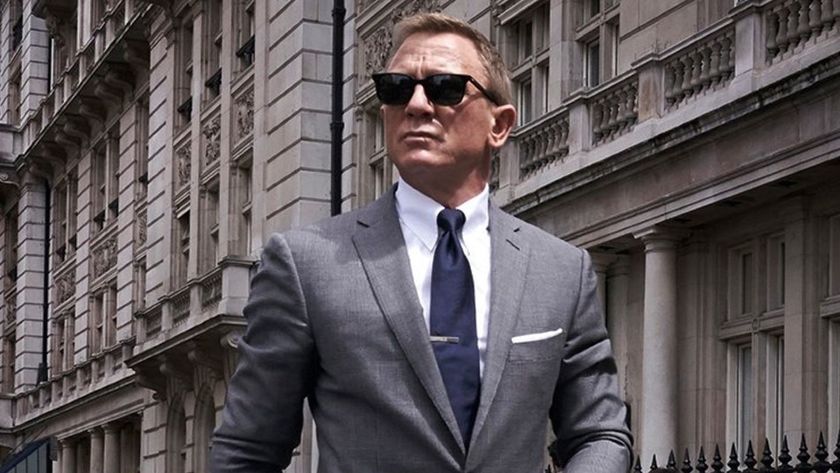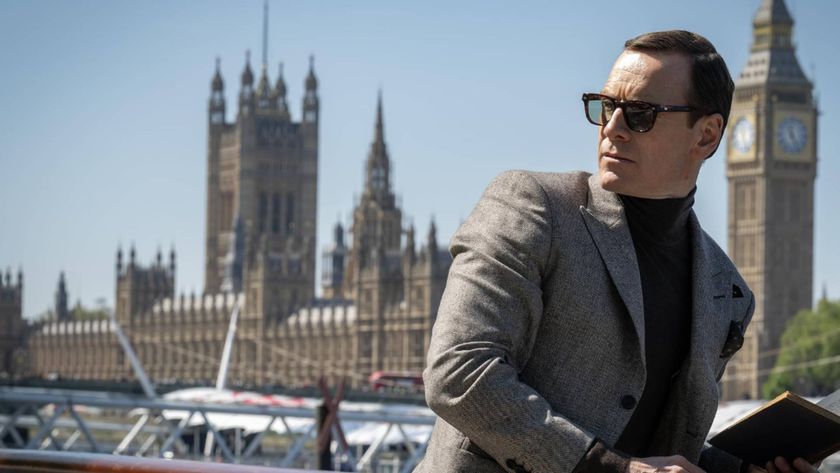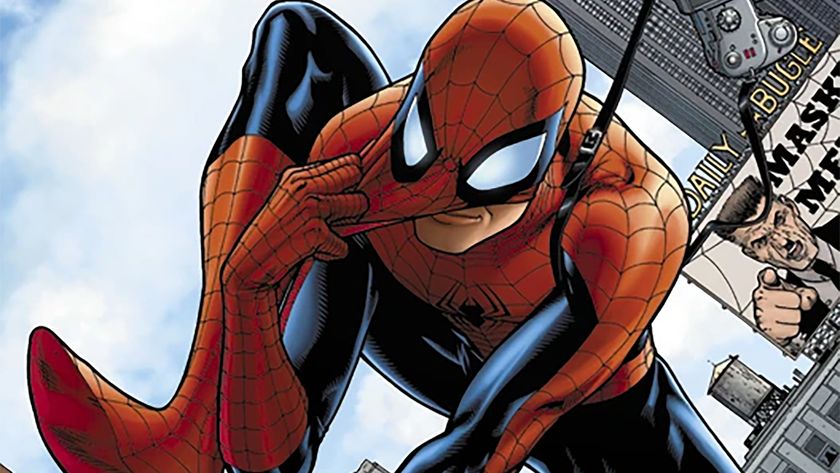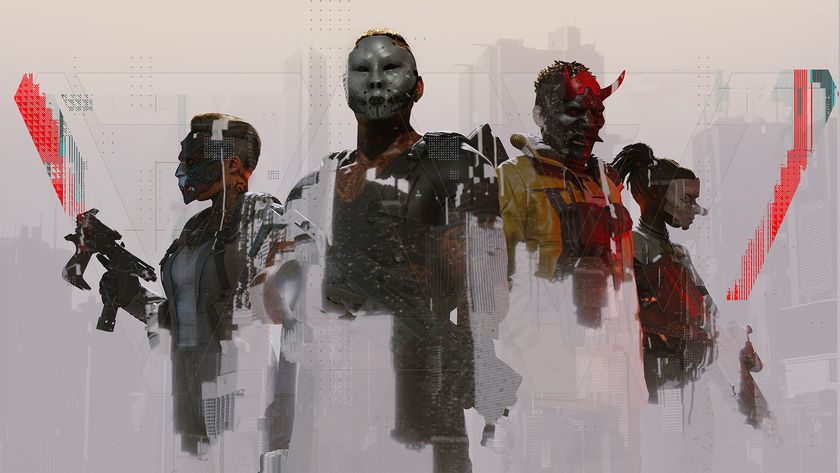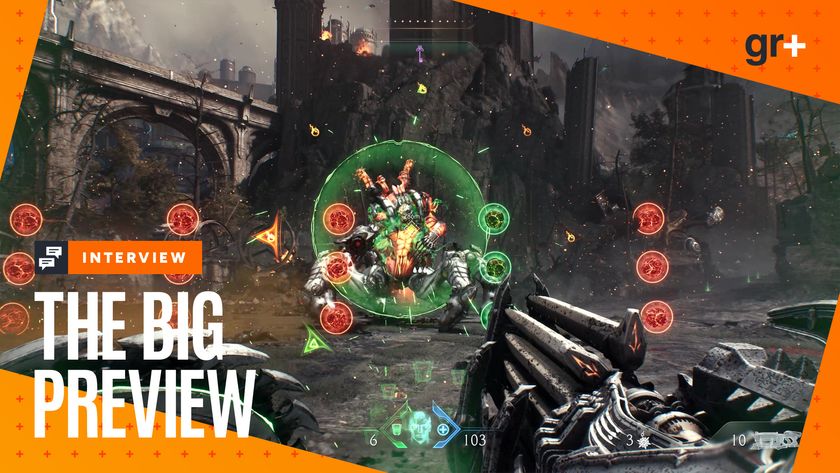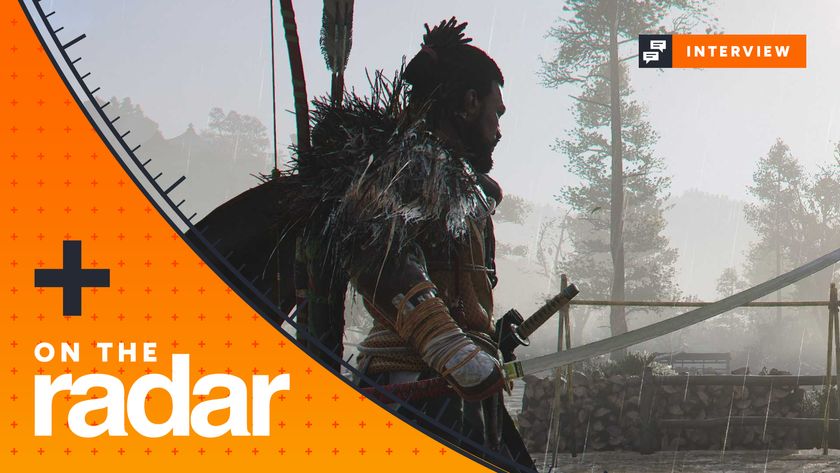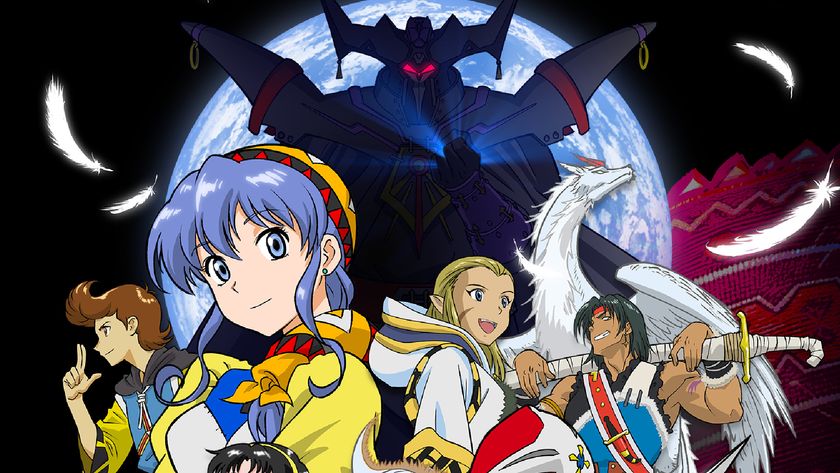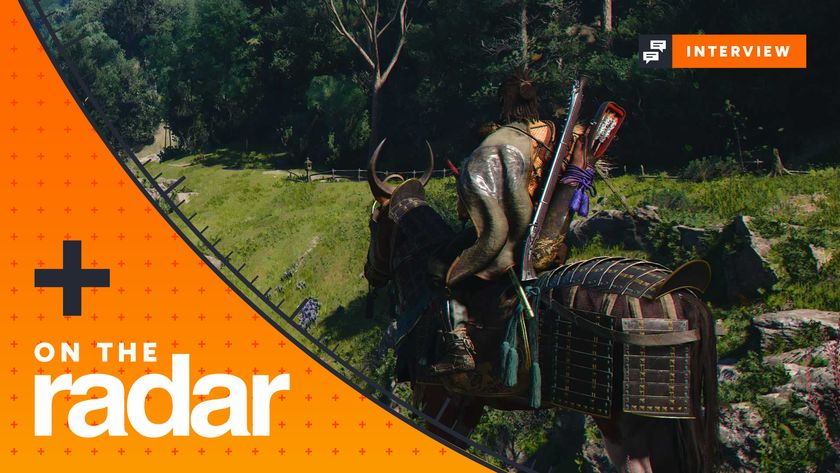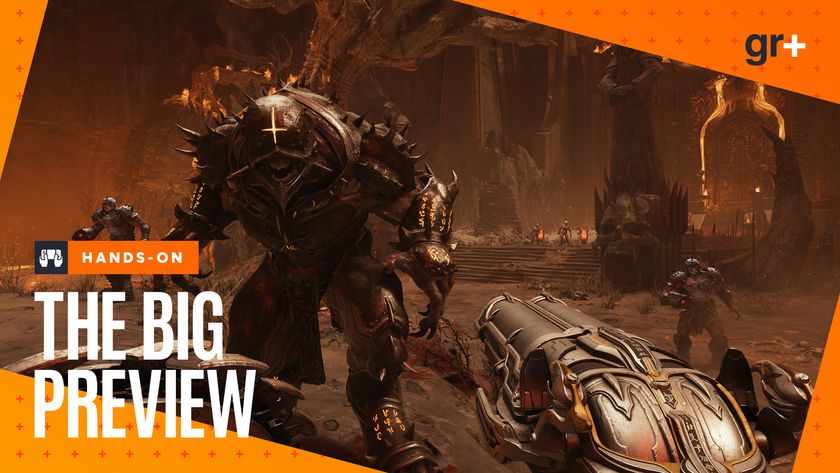Explosive action, outrageous gadgets and Pierce Brosnan
You’d expect no less from Bond’s 19th outing, The World Is Not Enough. And this time 007’s joined by Robert Carlyle’s pain-impervious super-baddie and Denise Richards as the world’s most improbable nuclear expert...
Any visitor to Pinewood Studios can hardly fail to notice James Bond’s influence on the place. Casting its shadow long and large over the lot is the legendary 007 Stage, the cavernous soundstage built originally to house the enormous sets for 1977’s The Spy Who Loved Me and which is again being used to film Bond’s latest adventure The World Is Not Enough.
Ironically it’s the first Bond film since Licence To Kill in 1989 to shoot at Pinewood, as both GoldenEye and Tomorrow Never Dies were forced to relocate elsewhere in the UK.
The return to Pinewood represents a good omen for Bond’s 19th official adventure, although – given the box-office success of the last two movies – its makers hardly need any luck. Global audiences have shown little sign of tiring of the adventures of Ian Fleming’s secret agent and his predilection for fast cars, even faster women, death-defying stunts, cynical black humour, nifty gadgetry and save-the-world heroism.
The World Is Not Enough, which takes its title from Bond’s family motto, marks Pierce Brosnan’s third outing as 007 since taking over from the miscast Timothy Dalton, who bowed out after just two adventures. From the word GoldenEye, Brosnan fitted the tuxedo and attitude of Bond like an expensive leather glove and swiftly made the role his own. Today, on a Pinewood soundstage, Brosnan looks every bit the action hero, drenched from head to toe after a morning spent scaling the walls of a submarine set which in the film’s climax has crashed vertically into the bottom of the Caspian Sea and which, at the start of each take, is raised vertically to 90 degrees and flooded with water (see box on page 81).
As befits the Bond ethos, The World Is Not Enough is another massive production encompassing multiple film units, a shoot in excess of a hundred days, and locations which range from the oil pipelines of Turkey to Scottish castles to the snow-capped peaks of the French Alps. Returning to the fold alongside Brosnan are Judi Dench as M, Desmond Llewelyn (in what will be his final outing) as gadgetman Q, and Robbie Coltrane reprising his role as Valentin Zukovsky, last seen in GoldenEye. Newcomer John Cleese steps in as R, Q’s assistant and heir apparent. “Desmond has been at us for a while to get a replacement,” explains veteran Bond producer Michael G Wilson who, since the death of Cubby Broccoli, has taken over the franchise along with his wife (and Cubby’s daughter), Barbara Broccoli. “So we thought that in the fullness of time John Cleese would become Q.”
The most surprising addition to the Bond family, however, is the one sitting in the director’s chair. Noted documentarian and director of such dramas as Gorillas In The Mist, Nell and Coal Miner’s Daughter, Michael Apted is more renowned for his dealings with actors than action, and says that he too was more than a little shocked to be asked to helm a Bond film. “I thought it was a joke at first,” he admits during a quick break, “but they seemed serious about it, so I was thrilled.” Did he find the idea of directing a film of this scale at all intimidating? “Very. And not just the fact I hadn’t done much action before, but what you have to deliver. You don’t just want to recycle what other people have done before. It’s a kind of highwire act, delivering what you know the audience expects and not keeping it in a rut, which is why it’s lasted 19 films. It imperceptibly keeps moving and changing.”
Apted is under no illusions as to why he was hired. “They wanted a better story between the action. They wanted to put women in the film more, to have a better attitude towards women, to have women not just be sexual decoration. A lot of my movies have had women at the heart of them. I don’t think they hired me and said: ‘How can we change it?’ They knew very well what they wanted to do. Not just Michael and Barbara, but Pierce as well. He didn’t want to spend five months shooting an AK47 or being blown up. He wanted to do real scenes and have real relationships.”
Sign up for the Total Film Newsletter
Bringing all the latest movie news, features, and reviews to your inbox
And with Apted in as director, the producers were able to secure some top-notch talent to play alongside Brosnan, notably Robert Carlyle as Renard, the film’s chief villain, a terrorist who, due to a bullet embedded in his brain, is impervious to pain. “If I’m directing Bond, actors know they’re going to be looked after,” insists Apted, whose wife, Dana Stevens, contributed to the film’s screenplay. “They’re not going to be hung out to dry playing caricature roles, and so we could aim for someone like Robert.”
An actor more used to working on smaller, more personal independent and arthouse films, Carlyle says it was indeed the presence of Apted which aided him in his decision to step up into the blockbuster arena. “It’s very hard to say it would have been a difficult choice with anyone else,” Carlyle reflects, “but the fact Michael was directing made it an awful lot easier, because I’ve been a big admirer of his work. I’m talking about the 7 Up documentaries, and Coal Miner’s Daughter was a fantastic movie. I thought: “I’m going into an unknown world with a similar person. He’s not used to doing this either, so we would be good for each other.” So has he found working on the $110-million production a real shock to the system? “If I had come straight to something like this from my work with people like Ken Loach and Michael Winterbottom, it would have been huge really,” Carlyle admits. “But having worked on Plunkett & Macleine, Ravenous and Angela’s Ashes, the budgets have been going up, so this is not a huge shock. But it’s like an army – I don’t think anybody would be prepared for the size of this.”
Carlyle’s truly inspired casting more than compensates for Jonathan Pryce’s ineffectual media mogul in the last installment. “I’ve always felt Bonds are only as good as their villains and he’s a terrific actor,” agrees Apted who, in keeping with the new Bond spirit, promises there’s more to Renard than obvious villainy. “He’s much more what the audience thinks is the villain of the piece from the beginning. Then it’s revealed that it isn’t all quite what it seems.”
But the Bond series is as famous for its glamorous leading ladies as its villains, and The World Is Not Enough is no exception, with Denise Richards as the improbably named nuclear-weapons expert Dr Christmas Jones and Braveheart’s Sophie Marceau in the mysterious role of Elektra, daughter of a murdered oil tycoon, whose relationship with Bond, Apted notes, is key to the entire film. “If she doesn’t work, I’m up shit creek,” he grins. And in keeping with the new feminist formula, Richards says her character has more depth than most Bond girls of the past. “It’s a lot more than running around and hanging off of Bond’s arm,” she insists. “My character has an agenda – to help Bond – and Sophie has another one altogether. We aren’t just caricatures. Christmas is strong, intelligent and sassy, and there’s a great one-upmanship between her and Bond.”
Although many still eulogise about Connery’s Bond, Apted believes his brutish ’60s take would be considered old-fashioned by today’s audiences, and sees Brosnan’s incarnation as more in keeping with late ’90s sensibilities.
“What’s interesting about the whole series is how each actor brings an entirely different character to Bond,” he muses. “Sean brought a great big macho thing, Roger a tremendous twinkle to it, and I think Pierce brings more vulnerability, more humanity, more sensitivity to it, a slightly more complex character which fits the times. So though they’re all called James Bond, they’re different characters.”
“Pierce has set fire to the whole thing again,” Carlyle avers. “Pierce Brosnan’s a star. He’s got a quality very few actors have. He’s got a charisma about him which is tangible. You can feel it coming off him.” But what of his continuing commitment to the role? Although Brosnan was originally contracted to appear in just three Bonds, producer Michael Wilson is confident this won’t be his final outing filling 007’s shoes. “I think he’s game for another one, certainly we are,” says Wilson.
While the star may sometimes change, the stunts remain as jaw-droppingly impressive as ever. The men responsible for upping Bond’s action ante this time around are stunt co-ordinator Simon Crane and second-unit director Vic Armstrong, who began planning and conceptualising the film’s fantastical action sequences many months before shooting began, sequences which were then incorporated into the final script. “The toughest part is trying to be original,” explains Bond veteran Armstrong, whose connection with the series dates back to You Only Live Twice when he doubled Sean Connery. Armstrong insists that in terms of scale and gadgetry The World Is Not Enough far exceeds the previous movie. “On the last one we started getting the Die Hard feel into it to a certain degree, in the grittiness of it. But you still want that 20-25 per cent of tongue-in-cheek extravaganza. There are so many good action pictures around that aren’t shackled by the storyline of Bond’s character. You have to stay in those parameters. You need to keep the elegance of Bond and the lifestyle. It’s getting a happy medium between those elements.”
Armstrong and Crane (whose cv includes Titanic and Saving Private Ryan and who doubled for Timothy Dalton during his brief stint as 007) worked closely on the film’s four main action sequences. These are the pre-credit jet-boat chase along the Thames between Bond and Maria Grazia Cucinotta’s Cigar Girl that ends up at the Millennium Dome; a ski sequence shot in the Alps; a night-time sequence in Valentin’s caviar factory in Baku that features helicopters trailing 15-foot-long circular saws beneath them (which Armstrong says cost £1 million to film) and the submarine climax that has Brosnan suffering for his art today. Both Armstrong and Crane praise Brosnan’s insistence on doing as many of his own stunts as possible, particularly during the opening boat sequence. “He was superb,” says Armstrong, “60 to 65 mph up the Thames, jumping waves, getting hit in the face; it’s like a sledgehammer when water whacks you at that kind of speed.”
For Apted, however, the hardest part has ultimately been delegating responsibility to the other units and still staying on top of what they all were doing. “I’m not tired. I’m not worn out. I’ve still got all my marbles,” he laughs. “There are a lot of fingers in the pie, not in any proprietorial sense, but the fact that it’s such a big job, and there is so much happening, you’ve just got to know what’s going on, otherwise you lose your way.”
And what of the end result? How does he think audiences will react to his new-style Bond? “I hope it delivers what they expect from a Bond film, and maybe gives them a bit more, so they don’t feel this is just Tomorrow Never Dies or GoldenEye all over again.”
The Total Film team are made up of the finest minds in all of film journalism. They are: Editor Jane Crowther, Deputy Editor Matt Maytum, Reviews Ed Matthew Leyland, News Editor Jordan Farley, and Online Editor Emily Murray. Expect exclusive news, reviews, features, and more from the team behind the smarter movie magazine.
